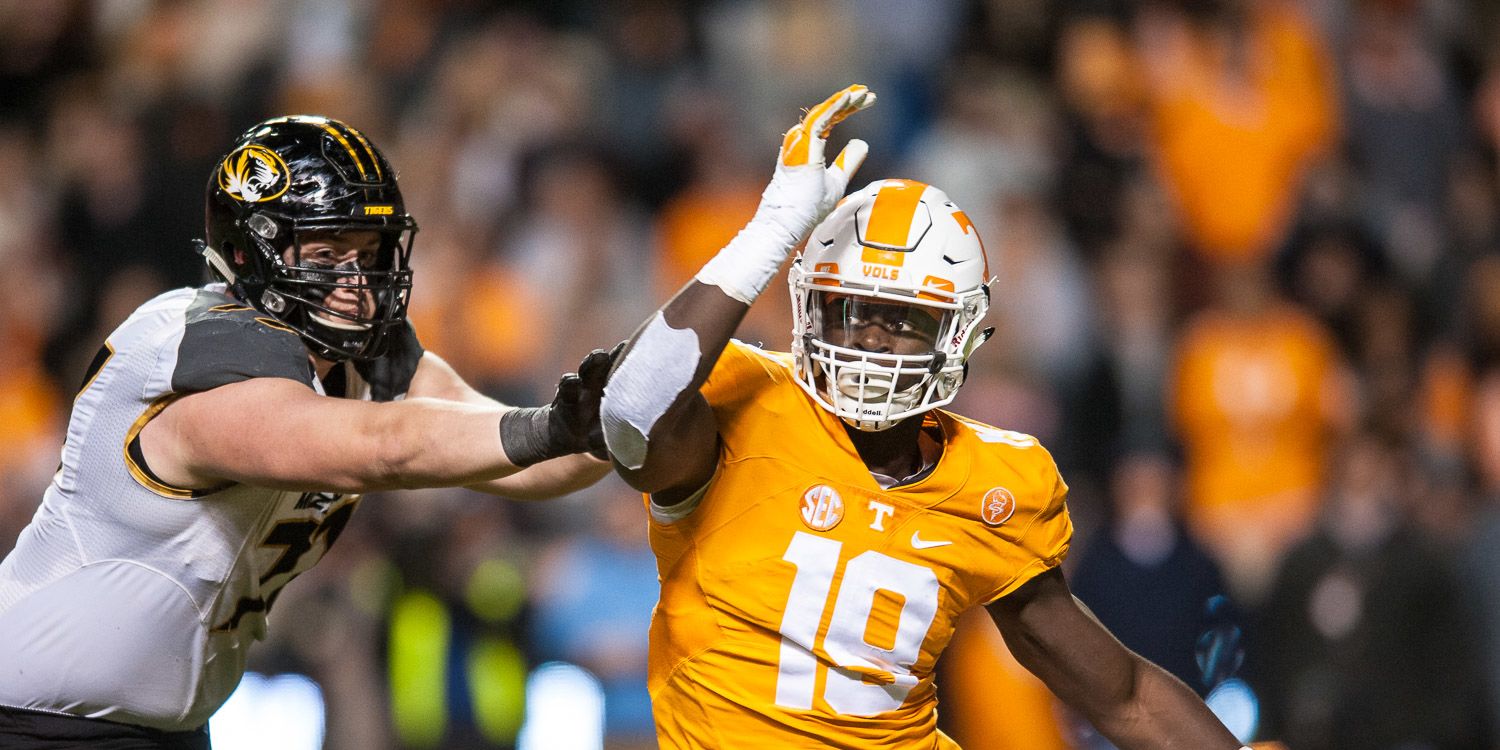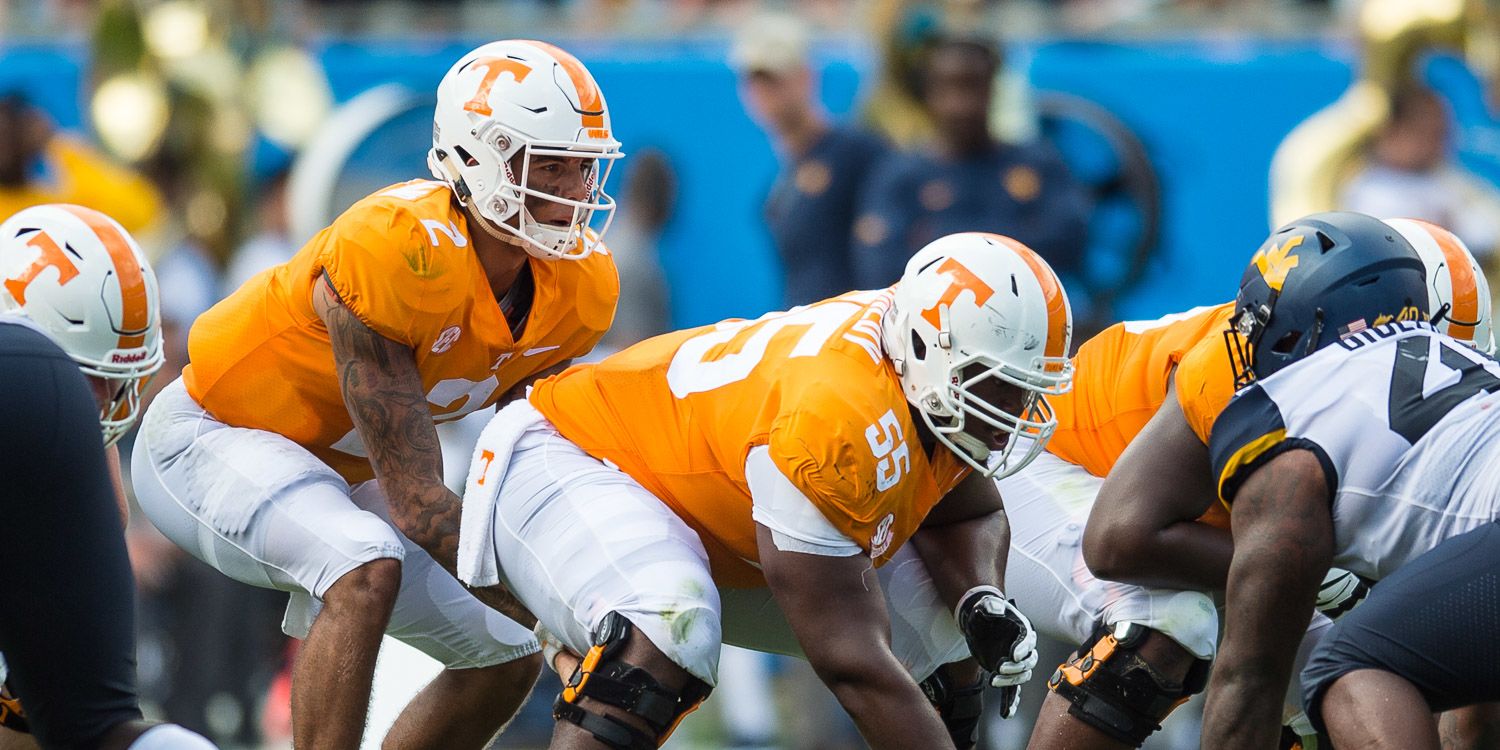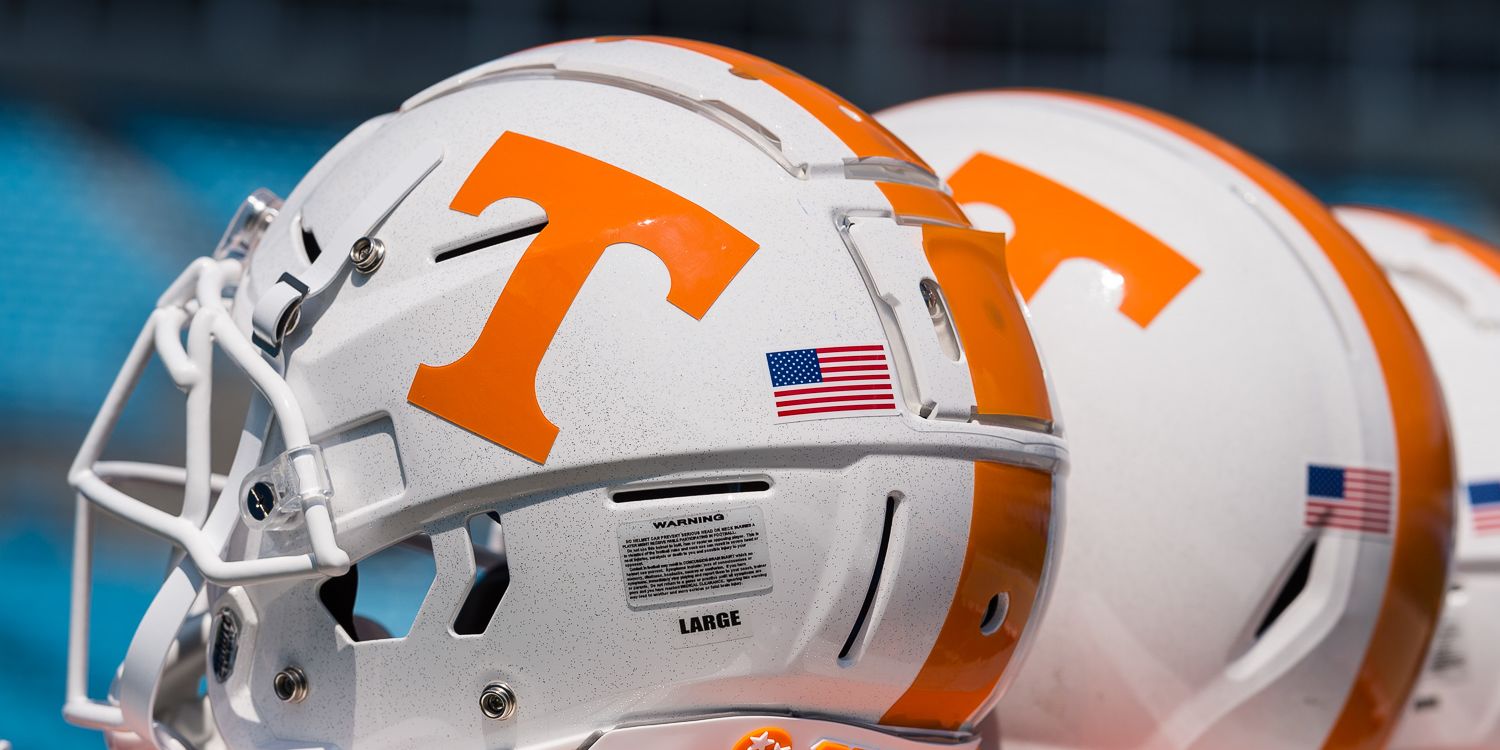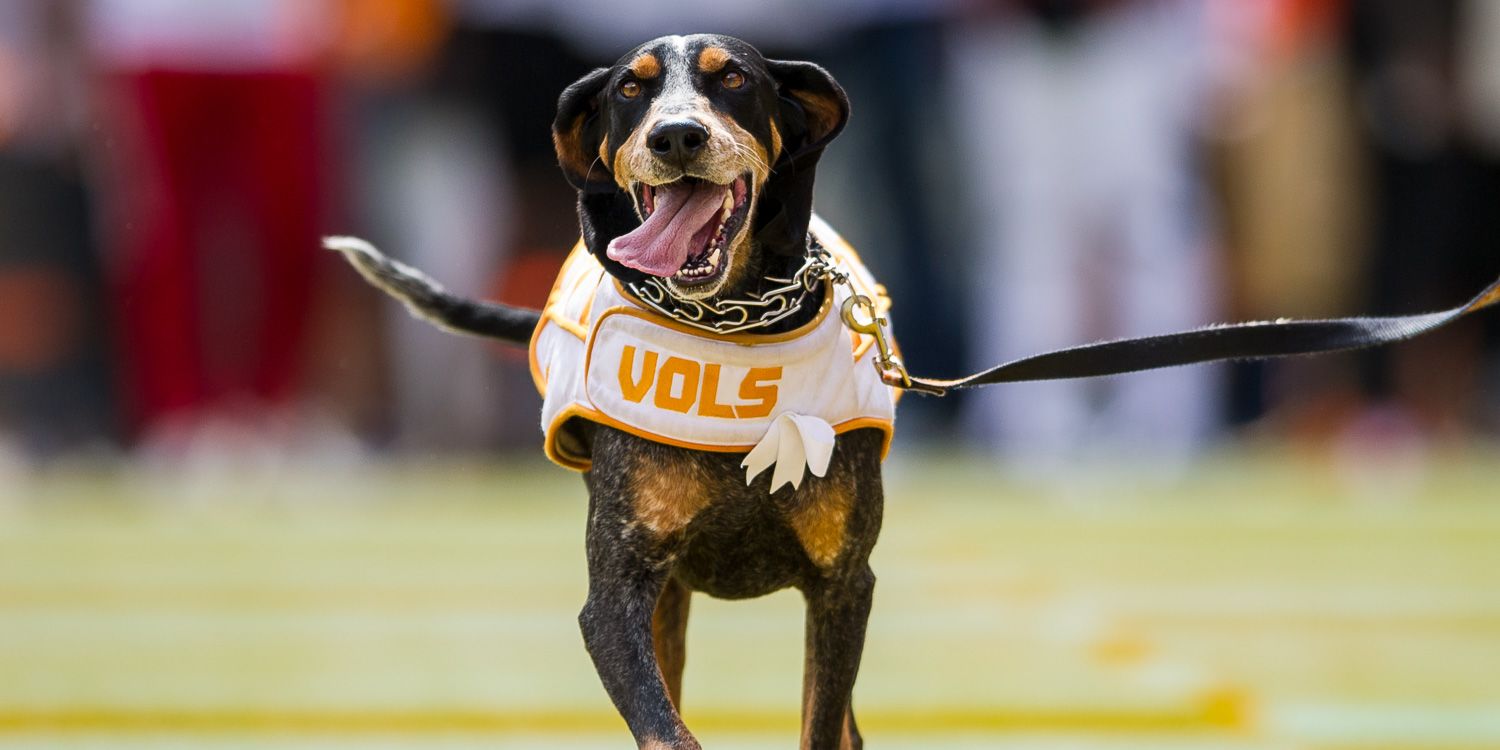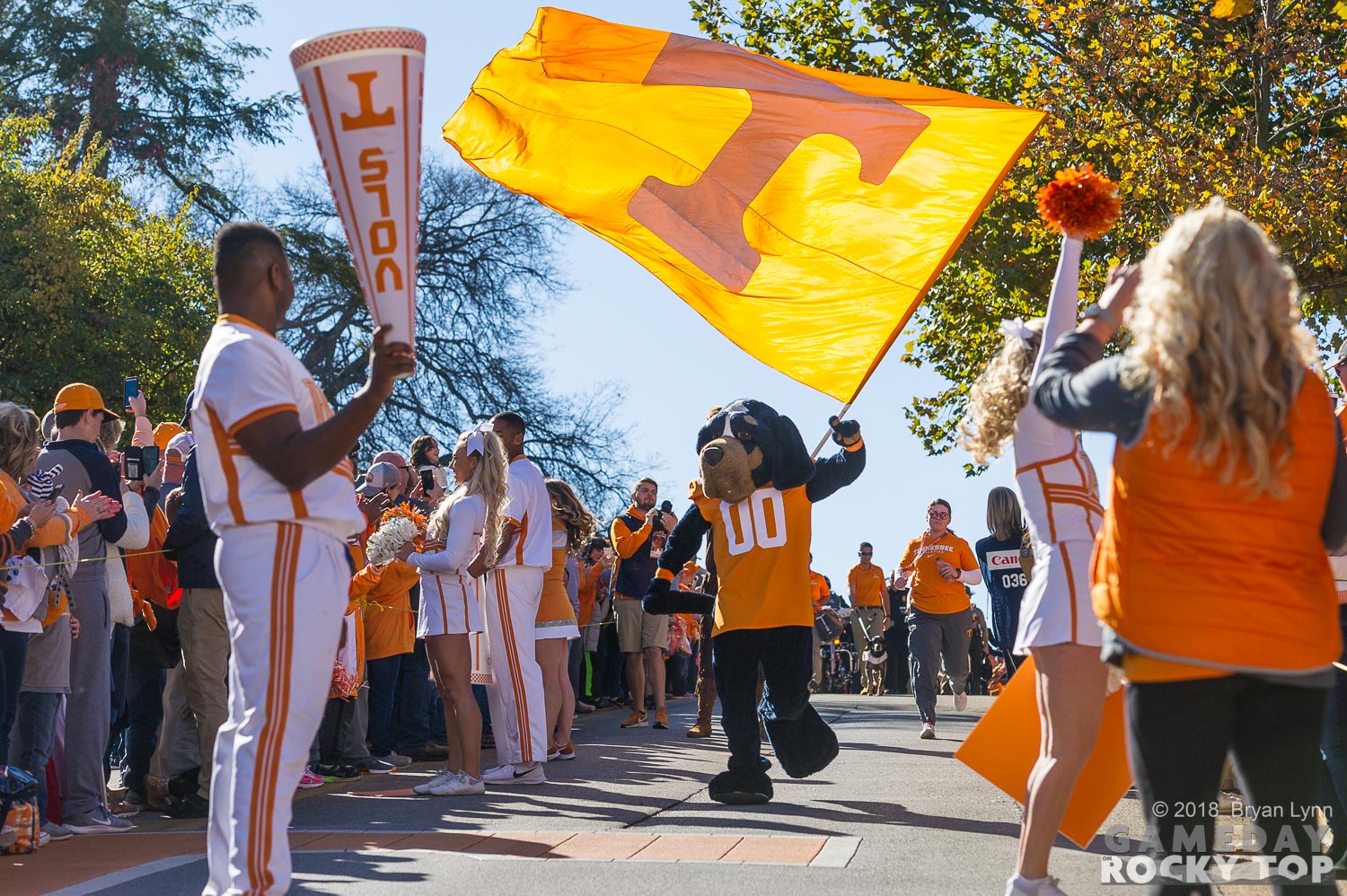With the month of May coming to a close and Tennessee
sitting on 6 public commitments after the recent addition of JUCO DB Art
Green, the Vols have a class that significantly favors quality over
quantity at this point. With the top two
JUCOs in the country (Green and DE Jordan Davis) along with a Top 5 QB in the
country, a 4-star DL, a potentially elite Slot WR in Jimmy Calloway, and one of
the best Longsnappers in the country, there is absolutely zero fat in this
class so far. But, after losing a
handful of bigtime prospects for whom they were in deep with, including DL
Justin Rogers, OL Tate Ratledge, and WR Rakim Jarrett – not to mention the
commitment of RB Ebony Jackson – the month of June is expected to be, and needs
to be, a profitable one for Coach Jeremy Pruitt and Tennessee. In fact, given the accelerated recruiting
calendar these days, with spring/summer official visits and the December signing
period, it’s almost a must that the Vols come out of June with some tangible
results. Below are some story lines to
watch as Tennessee’s camps
get started this coming weekend:
Vols would like to see some instate players camp
As opposed to the class of 2019, Pruitt and his staff are
clearly enamored with more than a few instate players. At the same time, there is a group of instate
players with multiple Power 5 and even SEC offers that don’t yet have an offer
from the Vols. Some do have a Tennessee
offer but so far the Vols aren’t pushing as hard as others, and Pruitt’s staff would
love for them to come camp in Knoxville and earn it:
DL Derrell Bailey
(camping this weekend), Corbet Mims (recent offer), and Michael Reese (offer). Dallas Walker is another instate DL who
Tennessee has offered but so far isn’t pursuing as hard as even the likes of
Auburn and Florida.
DBs De’Arre McDonald
(will definitely camp, date TBD), Devonte Nelson, Dajean Gibson, and Yukari
Blanchard are all interesting DB
prospects. Tennessee would surely love
to add to its DB board, and if they could do it with an instate player(s) who
earned an offer via a camp performance all the better.
Offensive skill players Darrin
Turner and Elijah Young both
have Vol offers but right now aren’t being heavily recruited by Tennessee. That could change if either or both of them
showed out at camp. There’s really no
good reason for Young – a Knoxville-area native – not to do so.
OL Marcus Henderson has
seen his recruitment slow down a bit and likely doesn’t committable offers
right now from the big name on his list, including Tennessee. Were he to make the cross-state trek from
Memphis and perform well, however (ala Melvin McBride last year), that could
change. Same for fellow Memphian, White
Station Spartan OL Ray Curry.
Not all of these guys will camp, but the ones that do –
especially those without offers – could find themselves being heavily targeted
by Tennessee and could quickly reshape UT’s overall board.
Priority instate targets could make decisions
As noted, the Vols would love to build the foundation of its
class with instate players, and OL Cooper
Mays and Chris Morris,S
Keshawn Lawrence, and DL Tyler Baron,
Jay Hardy, and Reggie Grimes are
arguably Tennessee’s top targets from the Volunteer State. Morris has already said he will be back to
Knoxville to camp in June after visiting the first weekend of May, and likely
will take a summer official visit as well.
The others, with the exception of Grimes, have Tennessee right at the
top of their respective lists and have developed a bond among the four of them
especially while jointly visiting Knoxville on multiple unofficial visits. They’ve also each flirted with the idea of
committing this summer, and were one to take the plunge and commit to Tennessee
it could create a tsunami among the rest (as well as others). Obviously the Tennessee staff would like to at
least get them back to campus this summer, but ideally would Tennessee would love
for them to jump onboard.
OL Board will really take shape
After a tremendous OL haul in the class of 2019 that came
after adding at least two future multiple-year starters (plus a grad transfer)
in the class of 2018, Tennessee is likely being extremely picky with its OL
spots and take no more than four, if that.
With Ratledge committing to UGA, Mays
and Morris are easily the Top 2 OL
on the board for the Vols. As discussed
above, one or both of them could do something this coming month or close to
it. Either way, along with targets like Joshua Jones (who just put the Vols in
his Top 6) and Denadre Buford, the
OL below will see some action in their recruitment in June:
Bigtime OL Xavier
Hill will take his official visit to Knoxville the weekend of June 14th. He’s been to Knoxville once already and has
also taken an OV to LSU. He had once considered
a May commitment – many thought Alabama was in the driver’s seat – but backed
off of that. However, he’ll be at Texas
A&M this coming weekend and then at Alabama for a mid-week visit right
after his trip to Tennessee, so with those visits in the can he may be ready to
make a decision soon.
Tennessee has also recently added two JUCO OL to its board, both
from ASA College in Brooklyn, the former home of Tennessee’s director of
programming for football Joe Osovet.
Both Tariq Stewart and Antwan Reed will make unofficial visits
to Knoxville the weekend of June 14th and depending on how the trips
go and how they look physically one or both could become serious targets.
Richie Leonard
will OV to Kentucky on the weekend of June 8th and is working on
setting up OVs to Tennessee (he visited in April unofficially) and likely FSU
after just OV’ing to Georgia Tech this past weekend. He’ll then decide over the 4th of
July weekend. Miami, UCF, Louisville,
West Virginia and Washington State are contenders as well.
Newly minted 4-star Marcus
Dumervil plans to visit Tennessee this month, along with Ohio State and UGA. Alabama, OU and LSU (already visited both
officially) in mix as well. Dumervil
hails from St Thomas Aquias HS in Florida, the alma mater of current Vols Josh
Palmer and Kivon Bennett, so Tennessee certainly has a tie there.
Javion Cohen, who
visited Knoxville back in February before committing to, and subsequently
decommitting from, South Carolina, is fresh off an OV to Georgia Tech this past
weekend along with Leonard. He’s got OVs
set for homestate (and presumed leader) Auburn this weekend and Florida the
weekend of June 15th, so if the Vols want to stay in that race
they’ll need to get him back to campus soon.
Josh Remetich from
New Orleans will camp after receiving an offer this month. He’s got some
lower-end SEC, ACC and Big 10 offers so it will be great for the staff to see
him in person to evaluate.
Other targets will camp and/or visit
Undoubtedly dozens of prospects from the classes of 2020 and
beyond will make their way to Knoxville during the month of June, many of whom
don’t yet have firm public dates. For
example, LB Kourt Williams might
visit this month as the Vols look to dip into California for a stud 2nd-level
defender for the second year in a row, and fellow LB Rodney Groce also plans on coming back to Knoxville after a great
visit in March.
Below are the players who are known to be planning to visit
Knoxville in June (along with the prospects discussed above), as well as some
notes on Vol targets visiting elsewhere during the month:
Recently offered LB Allen
Merrick and teammate (and Alabama commitment) ATH De’Rickey Wright, RB Israel
Abanikanda, and DL Derrell Bailey will visit this coming weekend. So will
2022(!) instate WR target Taylor Groves.
Notably, top RB prospect Tank Bigsby
will make his official this weekend to South Carolina, absolutely one to watch
as the Cocks are his presumed leader and will certainly be pushing for him to
shut it down. OL Xavier Hill will be
on an OV to Texas A&M (with some Vol targets).
Additionally, Auburn is holding its Big Cat Weekend event,
and Vol targets DL Zykevious Walker and
Dallas Walker, OL Cohen (OV), DB
Brian George (OV), LB Trenton Simpson (OV), and WR EJ
Williams will be on the Plains. Bigtime
LB target Len’Neth Whitehead will
make the short trip to Athens, GA to camp at UGA – likely in an attempt to earn
a commitable offer.
The June 8th
weekend is already setting up to be a monster, with multiple
top-of-the-board targets set to visit. LB
Trenton Simpson will take his
official visit to Knoxville in between the trip to Auburn and one to Georgia,
while DL Omari Thomas and high
school teammate RB Jabari Small will
take unofficial visits (after both visiting Texas A&M the weekend before),
perhaps also bringing fellow Briarcrest High student and top 2021 hoops target Kennedy Chandler with them. QB Haynes King is planning on making a
decision by late June, and he’ll also be at Texas A&M this coming weekend
before heading to Knoxville the 8th for his OV. How that visit goes will likely determine
whether the Vols end up signing a 2nd QB in the class to go with
Harrison Bailey, as King appears to be their lone remaining target at the
position.
OL James Robinson
will take his official visit to Tennessee the weekend of June 15th, a week after possibly visiting/camping at instate Auburn,
which will be one to watch. Bigtime WR
target Zevian Capers, currently an
Arkansas commit, will also take his OV to Tennessee this weekend. With multiple visits currently planned for
after his UT trip, the Vols will need to hit a homerun with Capers to land him.DL
Corbet Mims will also be in town
that weekend, unofficially, while stud DL Darrion
Henry is tentatively set to officially visit. The Vols sit in Henry’s top 4, with LSU (already
OV’d) and Cincinnati (OV the previous weekend) all trailing instate Ohio State,
who will receive an OV the following weekend.
DE Blayne Toll, S
Jaquorius Conley and LB Quandrrius Robinson all have official
visits to Tennessee scheduled for the weekend of June 22nd, so having three bigtime Defensive targets on
officials will be big for the Vols.
Robinson will be at Kentucky the June 8th weekend, Auburn
(where he was once committed) the weekend after, and Alabama for a mid-week
official in between those. He’s another
one who could make a late June/early July decision after having taken most of
his OVs. Meanwhile Toll is thought to be
an OU lean so the Vols have ground to make up there.
There is simply no getting around it: June is a huge month
for Tennessee. After a more-than-solid
class of 2019, Coach Pruitt and his staff absolutely have an opportunity to fast-track
the rebuild with a bigtime class of 2020.
The Vols will have many of their top prospects on campus for camps,
unofficial visits, and even official visits.
At the same time, many top targets will also be visiting other
campuses. Importantly, at least seven will
take their official visits to Knoxville
in June – after Tennessee used six of them for the Orange & White
Weekend. So the Vols – while not an
outlier in this Spring/Summer Official Visit trend that has massively accelerated
from last year – are absolutely shooting their shot incredibly early on many of
their top targets. Therefore, by the
time the 4th of July rolls around the direction of Tennessee’s 2020
recruiting class, which is currently short on quantity but high on quality,
will be much clearer.

